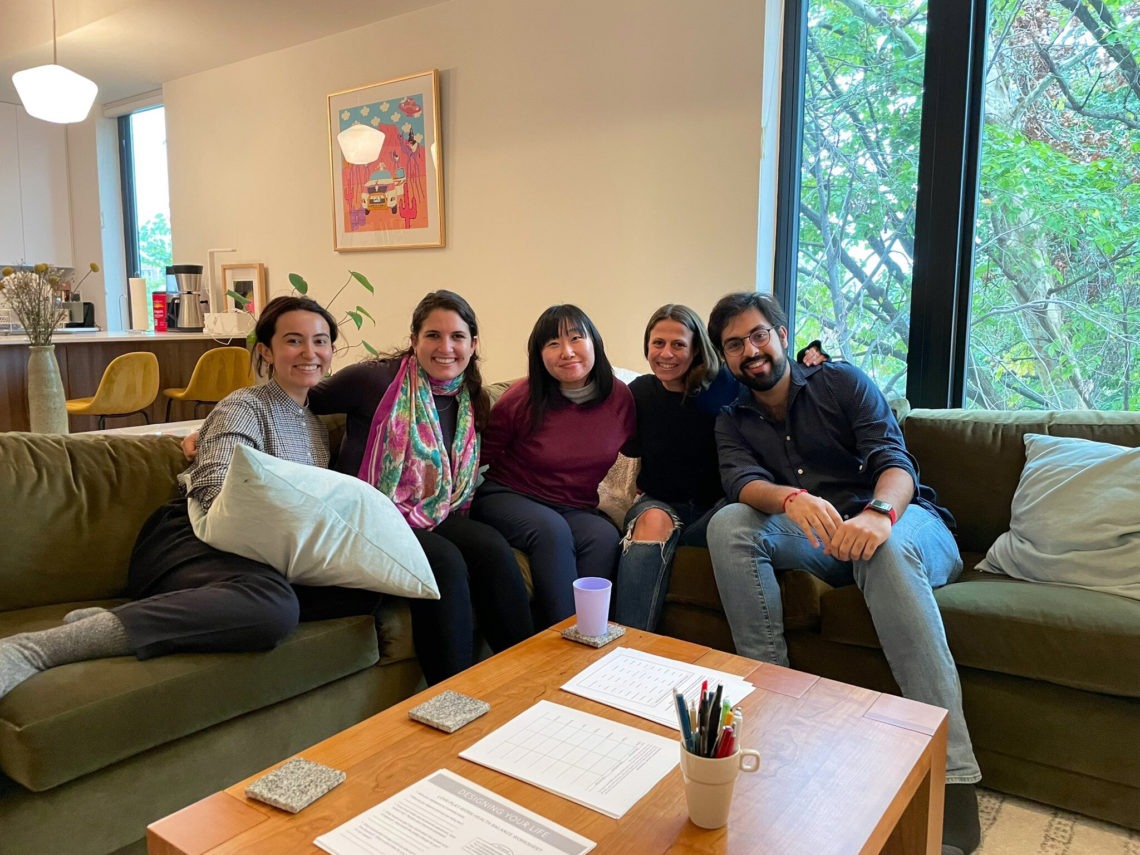
Sarah Cahlan, Emma Brown, Ariel Plotnick and Alsanosi Adam.
On May 9, alumnae Sarah Cahlan (‘19), Ariel Plotnick (‘18) and Emma Brown (’09) were among the staff at The Washington Post awarded the Pulitzer Prize for public service for coverage of the costs, causes and aftermath of the Jan. 6 insurrection.
And Alsanosi Adam (’16) of NPR was named a Pulitzer Prize finalist in Audio Reporting for “compelling, accessible and empathetic stories on the complicated war and threats to democracy in East Africa.”
Cahlan’s work with the Post’s Visual Forensics team, coupled with Brown’s contributions as part of the Rapid Response team in “41 minutes of fear: A video timeline inside the Capitol siege,” was part of the multimedia package recognized.
Plotnick, an audio producer, worked on “The Attack: Before, During and After,” a piece that also was included in the package.
The video is a visual walk through of the 41 minutes of the Capitol siege on Jan. 6, 2021, beginning at 2:12 p.m. when the building was first breached by rioters. The 14-minute documentary includes videos from inside the Capitol, corresponding with maps, police radio, interviews and other communication, overlaid with narration, to retrace what happened up until the last rioter was cleared from the building.
“You’re seeing a lot of tidbits of an event,” Cahlan said. “You’re getting videos that are anywhere from a minute to three hours, and they’re showing you different parts and different angles of the event. And what we try to do is gather those videos, verify them, locate them and figure out chronology. And with doing that, we’re hoping that we can create some context around an event.”

Sarah Cahlan (left) pictured with the Post’s Visual Forensics team.
“41 minutes” was published 10 days after the insurrection, with the teams working from sunup to sundown. Visual Forensics spent much of the time gathering as many videos as they could and syncing them together to get a rough timeline with the help of a “face video,” which could be a livestream or any continuous footage, to use as a base. Cahlan said she and her team were also geolocating the videos, which helped them map where the rioters were at various times and in relation to the lawmakers who were in the building. In some instances, the only thing between a rioter and a lawmaker was a door.
Brown’s role on the Rapid Response team, which produces investigative stories in a condensed time frame, was to track down lawmakers who were in the Capitol during the insurrection to talk about their experiences.
“I was asking a lot of questions about what time did that happen?” Brown said. “Do you have text messages or video or photos that showed the time, because we were trying to reconstruct, in a detailed way, when it happened. One of the key accountability questions we were trying to answer was how close did rioters get to members of Congress. That helped us to map out their movements and the timing of them.”
Asked about challenges besides quickly producing a complex multimedia investigative piece, Cahlan mentioned the emotional toll of having to look at the disturbing videos over and over again as she edited them. She said it’s important for journalists to take a step back when they need to, as well as for editors and managers to establish open lines of communication for their reporters and provide them with the training to navigate difficult reporting. For Brown, one of the things she appreciated most about working on the project was the collaboration effort.
“It was a really compressed timeframe and it was probably the most intense but also intensely collaborative experience I’ve ever had in journalism,” Brown said.
“The Attack: Before, During and After” piece outlined what law enforcement and Pentagon leaders knew of the insurrection before it happened, as well as former President Donald Trump’s and the FBI’s reactions while it was happening and the after effects, including trauma and misinformation. Plotnick edited and project managed the audio portion, provided editorial oversight and feedback, and worked with other project managers in the multimedia build-out to incorporate the reporting on the ground into audio storytelling.
“I managed, throughout the build-out, individual pieces of audio,” Plotnick said. “So for example, clips of audio that were sent to voicemail to elected officials after Jan. 6.”
Whereas turnaround time for “41 minutes” was quick, the opposite was true for “The Attack.” Plotnick said this project began after Jan. 6 and continued throughout the summer.
“I was, eventually, sitting in meetings, listening to reporters talk about what they were working on, trying to get a sense of where the narratives were coming from that we could translate into audio storytelling,” Plotnick said. “We were really looking at this as a big, in-depth, long-form narrative storytelling. We could offer this multimedia build-out package so that people reading it really got a sense of the intimacy in what it actually takes to do this sort of investigation.”
Plotnick wanted not only an engaging audio story but also one that made the human toll clear.
“The biggest challenge for me was, what can we as audio producers do to make listeners come away feeling like they learned something new, something revelatory, something they didn’t already know about Jan. 6?” she said. “Our goal is to make work that people can understand the human toll.”
All three said Berkeley Journalism prepared them for their work at the Post. Cahlan, who cited Carrie Lozano (‘05) and Betsy Rate as her mentors, was involved with the Human Rights Center, learning OSINT techniques before the J-School offered a class. As a documentary student, she learned how to edit (and quickly) as well as to write scripts.
“Being in the documentary track, you’re very much in a video headspace,” she said. “So you know how to analyze videos. You’re going to be looking at them with a critical eye. You can tell if something is misleadingly cut. You can see jump cuts, weird edits, audio that doesn’t make sense. So I think beyond the OSINT reporting and the closed-source reporting I learned, it’s also just to have that visual mind whenever I come to a story.”
Brown, who was on the narrative writing track at Berkeley, said her J200 instructor Lydia Chavez was “transformative” for her. Not having much journalism experience at the beginning of her time at Berkeley, Brown said that Chavez asked her to do things she wasn’t sure she could do. Brown gained more confidence in herself and her journalistic ability. Cynthia Gorney, who taught narrative writing, and Michael Pollan, Brown’s thesis adviser, were also influential as Brown honed her writing skills.
Plotnick said she felt supported as an audio student at Berkeley to do the creative work she wanted to do.
“They gave me the opportunity to learn new things and make audio stories and put them out in the world,” she said. She specifically remembered her advanced audio class with Anna Sussman (‘05), who supported her as she learned how to develop long-form stories.
Plotnick, like Brown and Cahlan, recognized the work from people on various desks at the Post, who came together to produce the multimedia package. “This award is really an award for the entire newsroom,” Plotnick said. “It’s a real reminder that public service journalism really takes a village. And it’s special to work with such talented people.”
Dean Geeta Anand says all three reporters excelled while at Berkeley Journalism. Cahlan’s thesis project, “TheirStory,” which explored assumptions about gender roles in anthropology scholarship, premiered at the Mill Valley Film Festival and was short-listed for a BAFTA Student Award. Plotnick’s audio thesis “TEPCO: The Defunct Ceramics Factory That Still Dishes Out Nostalgia,” aired on KQED.
The Pulitzer Board also recognized the NRP team that included Alsanosi Adam, who was a radio producer in South Sudan before coming to Berkeley Journalism and studying TV and documentary film production. His team produced a series of stories on the complicated war and threats to democracy in East Africa, an area of the world that rarely gets sustained coverage.
“It is an honor and a privilege to be recognized by the Pulitzer Prizes for the work we have been doing in East Africa,” Adam said. “My work with NPR as a producer was wonderful, breaking news and stories and being the first to get there and the first to get it right was great and refreshing. As humans we learn what we learn in any field for the better of humanity, and I think my team and I were just doing that. Thanks to Berkeley Journalism where I mastered the craft, and thanks to NPR’s East Africa correspondent Eyder Peralta for the opportunity.”
By Bria Manning (‘23)

